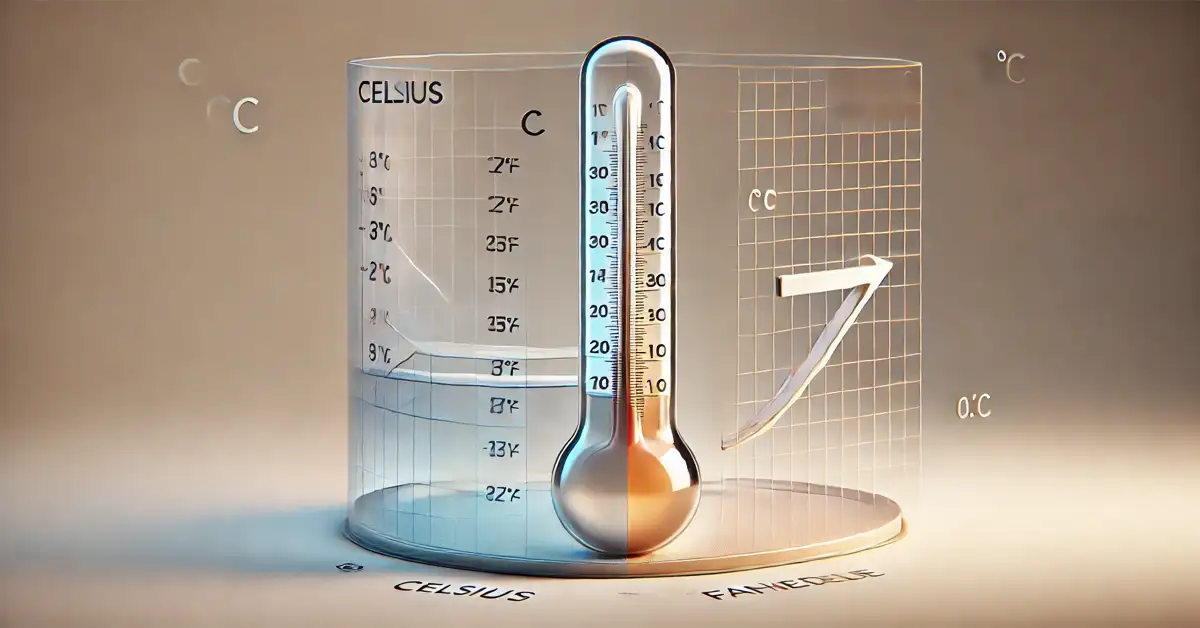In the world of temperature measurement, converting between different scales is a skill that comes in handy in many contexts, from weather forecasts to scientific research and everyday tasks. One common conversion many people encounter is between Celsius (°C) and Fahrenheit (°F). For instance, the conversion from 20C to F is a straightforward process, but understanding how and why such conversions work is essential for accurate interpretation of temperature data in various situations. In this article, we will explore how to convert 20C to F, explain the relationship between the Celsius and Fahrenheit scales, and provide useful tips and tools for making these conversions.
What is Celsius and Fahrenheit?
Before we dive into the details of 20C to F conversions, let’s first understand the two temperature scales involved: Celsius and Fahrenheit.
The Celsius Scale
The Celsius scale, also known as Centigrade, is part of the metric system and is widely used around the world. It is based on the freezing and boiling points of water. On the Celsius scale:
- The freezing point of water is 0°C.
- The boiling point of water is 100°C at sea level (standard atmospheric pressure).
This scale is commonly used in scientific settings, weather reporting, and countries that follow the metric system, including most parts of Europe, Asia, and Latin America.
The Fahrenheit Scale
The Fahrenheit scale is used primarily in the United States and a few other territories. It was developed by German physicist Daniel Gabriel Fahrenheit in the early 18th century. On the Fahrenheit scale:
- The freezing point of water is 32°F.
- The boiling point of water is 212°F.
This scale is often used in weather reports, cooking temperatures, and for personal thermometers in the U.S. and some Caribbean nations.
Converting 20C to F: The Formula
To convert 20C to F, you need to use a specific mathematical formula. The general formula for converting Celsius to Fahrenheit is:Fahrenheit=(Celsius×95)+32\text{Fahrenheit} = (\text{Celsius} \times \frac{9}{5}) + 32Fahrenheit=(Celsius×59)+32
This formula takes into account the difference in the size of the degrees between the two scales (Celsius and Fahrenheit). The Celsius degree is larger than the Fahrenheit degree, which is why the multiplication by 9/5 is necessary. The addition of 32 is due to the fact that the freezing points of water on the two scales are different.
Example: Converting 20C to F
Let’s now apply the formula to convert 20C to F:Fahrenheit=(20×95)+32\text{Fahrenheit} = (20 \times \frac{9}{5}) + 32Fahrenheit=(20×59)+32 Fahrenheit=(36)+32\text{Fahrenheit} = (36) + 32Fahrenheit=(36)+32 Fahrenheit=68°F\text{Fahrenheit} = 68°FFahrenheit=68°F
So, 20°C is equivalent to 68°F. This means that a temperature of 20 degrees Celsius corresponds to a comfortable room temperature in Fahrenheit, which is typically around 68°F.
Why is the Conversion Between Celsius and Fahrenheit Important?
Understanding the conversion from 20C to F is more than just a mathematical exercise. Knowing how to convert between these two temperature scales is important in various fields:
Weather Forecasting
Meteorologists often provide temperature readings in both Celsius and Fahrenheit depending on their audience. In countries where Celsius is the standard (such as most of the world), temperature reports in Fahrenheit might not be immediately understood. Knowing how to convert between the two systems is essential for reading international weather reports accurately.
Cooking
Recipes might use different temperature scales. In many European countries, oven temperatures are given in Celsius, while in the U.S., they are often listed in Fahrenheit. When cooking from international recipes, understanding how to convert oven temperatures can ensure that your dish turns out just right.
Science and Engineering
In scientific research and engineering, accurate temperature conversion is crucial. Different countries and industries might use different systems of measurement, so being able to convert 20C to F (and vice versa) is essential for proper data interpretation and communication in research studies, experimental setups, and product development.
Health and Medicine
Many medical devices such as thermometers may provide temperature readings in either Celsius or Fahrenheit. For example, human body temperature is usually measured in Fahrenheit in the U.S. (normal body temperature is typically 98.6°F), but in many other countries, Celsius is used. Therefore, it is important to know how to convert 20C to F and other temperature values to ensure accurate health assessments.
The Mathematics Behind Celsius to Fahrenheit Conversion
The 20C to F conversion formula is rooted in the relationship between the two temperature scales. Let’s break down the mathematics further:
- Scaling Factor (9/5): This factor accounts for the difference in the size of the temperature units between Celsius and Fahrenheit. In other words, a 1°C change represents a 1.8°F change.
- Offset (32): The freezing point of water on the Celsius scale is 0°C, but on the Fahrenheit scale, it is 32°F. This offset means that the Fahrenheit scale starts 32 degrees higher than the Celsius scale.
This scaling and offset mechanism explains why the Celsius and Fahrenheit scales are not directly equivalent and why the formula involves multiplying by 9/5 and adding 32.
Practical Applications of Celsius to Fahrenheit Conversion
Now that we know how to convert 20C to F and understand the math behind it, let’s explore some practical applications of these conversions.
Everyday Life
In everyday life, being able to convert temperatures between Celsius and Fahrenheit helps people navigate various situations. For example, when planning outdoor activities or trips abroad, travelers need to convert temperatures for better understanding. Knowing that 20C to F equals 68°F can help someone from the U.S. interpret a weather forecast while traveling in a Celsius-based country.
Industry and Manufacturing
In industries such as chemical processing, manufacturing, and food production, temperature control is critical. These industries often use Celsius in international settings but may need to convert to Fahrenheit for equipment settings, safety standards, and product specifications. Knowing how to accurately convert temperatures ensures proper function and safety.
Travel and International Communication
Traveling between countries that use different temperature scales requires the ability to convert temperatures on the go. Whether adjusting clothing for the weather or preparing for a flight, knowing the conversion from 20C to F helps international travelers understand and prepare for conditions they might face.
Converting Celsius to Fahrenheit: Quick Estimation Methods
While the formula is the most accurate way to convert 20C to F, sometimes you need a quick estimation. If you need to make a fast calculation, here’s a simple rule of thumb:
- Double the Celsius temperature: Multiply the Celsius value by 2.
- Add 30: After doubling the Celsius temperature, add 30 to the result.
For example, if you want to estimate 20C to F:
- Double 20 to get 40.
- Add 30, resulting in 70°F.
This method is quite close to the actual value of 68°F, which shows how well the estimation works for common temperature ranges.
Tools for Conversion
For those who prefer not to rely on manual calculations, several tools can assist in converting temperatures between Celsius and Fahrenheit:
Online Calculators
There are numerous free online temperature conversion tools available. By simply inputting a value in Celsius or Fahrenheit, these tools instantly provide the corresponding value in the other unit. Websites like ConvertUnits, RapidTables, and many others provide this service.
Mobile Apps
There are many mobile apps for both iOS and Android devices that feature temperature conversion. These apps are useful for quick conversions while on the go, especially for travelers or professionals who work with both temperature scales.
Scientific Calculators
For those who work with more complex temperature conversions in scientific contexts, scientific calculators often have built-in functions that can convert Celsius to Fahrenheit and vice versa. These calculators allow for quick and accurate conversions without the need to memorize the formula.
Conversion Charts
Another handy tool is the conversion chart. Conversion charts display a range of temperatures on both the Celsius and Fahrenheit scales, allowing for a quick reference. These charts are particularly useful in kitchens, classrooms, and other environments where temperatures are frequently converted.
Potential Mistakes When Converting Celsius to Fahrenheit
When converting 20C to F or any other temperature, there are several common mistakes to be aware of:
- Forgetting to Add 32: One of the most common errors is forgetting to add 32 after multiplying by 9/5. Without this step, the result will be incorrect.
- Confusing Celsius with Fahrenheit: Always ensure that you are applying the correct conversion formula depending on whether you are converting from Celsius to Fahrenheit or vice versa.
- Rounding Errors: In some cases, rounding can introduce small errors, especially when estimating temperatures. It’s best to use the full conversion formula for precise calculations.
- Incorrect Formula: Using the wrong formula for conversion can lead to significant errors. Always check to ensure you are using the correct conversion method.
Conclusion
Converting 20C to F is just one example of a common temperature conversion that many people encounter. Understanding the relationship between Celsius and Fahrenheit, the formula for conversion, and the practical applications of these conversions is essential in daily life, scientific work, cooking, and travel. Whether you are using an online tool, performing manual calculations, or simply estimating, it’s important to know how to make these conversions accurately and effectively.
FAQs
- How do I convert 20C to F? To convert 20°C to Fahrenheit, multiply 20 by 9/5 and then add 32. The result is 68°F.
- Why are there two different temperature scales? The Celsius scale is based on the freezing and boiling points of water, while the Fahrenheit scale was designed with historical reference points based on human body temperature and freezing brine.
- What is the best way to convert Celsius to Fahrenheit? The best method is using the formula: Fahrenheit = (Celsius × 9/5) + 32. For quick estimates, doubling the Celsius value and adding 30 can give a rough idea.
- How accurate is the estimation method for Celsius to Fahrenheit? The estimation method is quite accurate for most temperatures but may slightly differ for extreme values.
- Why does the freezing point of water differ on each scale? The different reference points on each scale are due to historical reasons and the origins of the Fahrenheit and Celsius systems.
- Can I convert other temperatures besides 20C to F using the formula? Yes, the formula can be applied to any Celsius temperature for accurate conversion to Fahrenheit.









